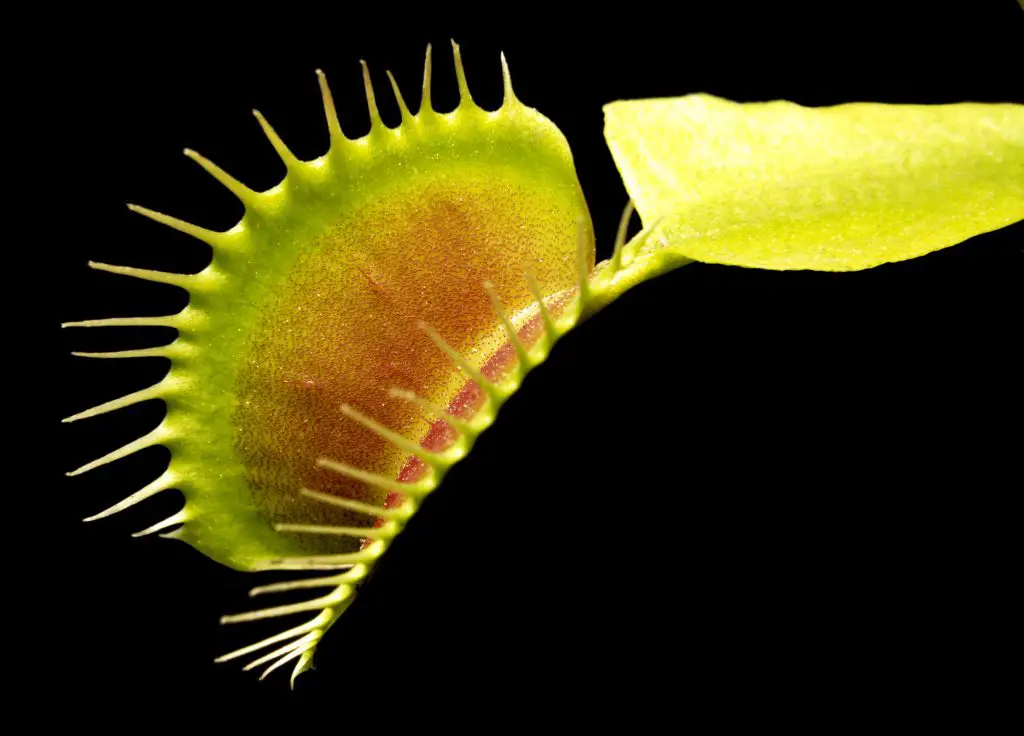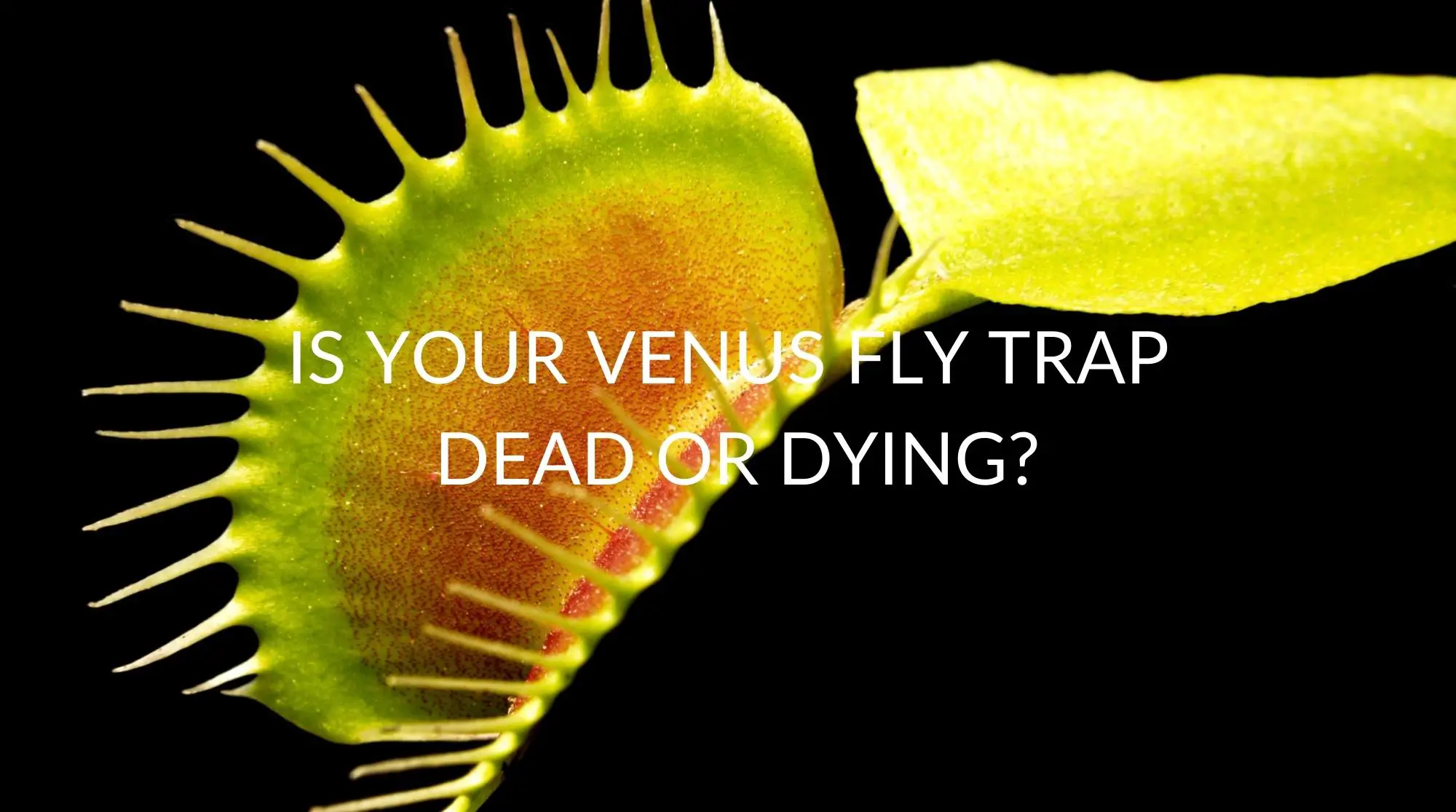The way to tell if your Venus flytrap has died or is just in a normal stage of dormancy is to examine the color and consistency of the plant. If your flytrap is black with a soft mushy consistency, then your plant may be dead. But if there are a few green leaves present, then your plant is simply dormant.
This article takes a look at Venus flytraps and the difference between plants in the dormant stage and plants that have died. We also look at why it’s so easy to confuse the two.
Do Venus Flytraps Go Dormant?
Venus flytraps usually enter a dormant time in autumn. During this time, they will look different, and this is why many growers worry that their plant is actually dying.
The dormancy period lasts for around two months and is completely natural. It is not a sign of plant stress or poor health.
You should still be able to see signs of green on the plant. The rest of the plant may look withered or even blackened. But be reassured by that little bit of green still present.
During dormancy, Venus flytraps can look as though they are not even alive, let alone thriving. However, Venus flytrap experts recommend that you leave the plant alone and be patient.
The period of dormancy is not the time to be digging around or fiddling with the plant in any way.
Dormancy is a very necessary rest for the plant if you want it to grow and to live a long healthy life.

Do Venus Flytraps Go Dormant Indoors?
Venus flytraps enter a natural period of dormancy during the cold months. They will exit dormancy as temperatures rise again. Therefore, plants kept indoors, where temperatures are typically kept warm and stable, will often skip dormancy.
Venus flytraps will only go dormant indoors if indoor temperatures are lowered enough to provoke the plant to enter a natural period of dormancy.
Of course, these temperatures also need to remain low enough to keep the plant dormant before they are raised again. The rise in temperature will then naturally trigger the plant to exit dormancy.
Although this is possible, it is not a very convenient way to maintain a family home during the winter months.
Do Venus Flytraps Need Dormancy?
Venus flytraps need periods of dormancy in order to grow well, remain healthy, and reach longevity. They need to enter dormancy at least once every year, although there is no agreement yet as to how long dormancy periods need to last.
During dormancy, your plant is storing energy in its underground rhizome or the bulb of the plant.
Venus flytraps that are unable to utilize regular periods of dormancy will not grow well and struggle to propagate. These plants are generally weaker in structure and have a shorter life cycle than those kept in more natural conditions.
Flytrap experts advise that a plant can skip at least one dormancy period without suffering too much harm. And that although the plant’s growth will slow; as a result, it will soon recover.
However, skipping consecutive dormancy periods is definitely something to be avoided. Experienced growers place their plants outside (in a sheltered area) for at least two months during cold weather.
Alternative areas include basements and garages that are not heated.
The consistent low temperatures will trigger the plant to enter a natural period of dormancy.
Common reasons for growers to skip a period of dormancy include when they are encouraging seedlings or leaf cuttings or when a grower has just received a new plant and wants to inspect and observe the plant first.
How To Tell If Your Venus Flytrap Is Dead Or Dormant
There are a number of ways to work out whether your Venus flytrap is dying, dead, or in a normal healthy period of dormancy. Finding and recognizing these signs will become easier with experience.
Your Venus flytrap is entering dormancy or is already dormant if:
- It is shedding or has shed its summer leaves. This process looks bad but is actually quite natural.
- Growth has slowed
- The plant is putting out lower ground level leaves
- The plant looks as though it could be dying
- Most of the leaves have turned black
- The bright green natural colour of the plant is fading
- The stems are lower lying and kind of “drooping”
- There are still some green leaves present
- All of these things happen toward the end of autumn
- All of these things happen gradually – over a period of several weeks
Your Venus flytrap is dying or dead if:
- The entire plant is going black or is already completely black
- Every part of the plant has turned a pale yellow unhealth colour
- All of the leaves fall off
- The base of the plant is soft and mushy
- There is a rotting smell coming from the plant
- All of these thing occur during a non-dormant time of the year (i.e. during spring or summer)
- All of these things occur quickly: Venus fly traps are known for dying fast. In contrast, a dormant plant will exhibit all of these changes very slowly.
How To Care For Your Venus Flytrap In Its Dormancy
The best thing you can do for your dormant Venus flytrap is to leave it alone. Unfortunately, during dormancy, most growers become anxious and meddle with the plant to find a problem or try and provoke the plant to exit dormancy early.
Sadly, many owners will dispose of a healthy “sleeping” plant because they mistakenly believe it has died. Caring for your Venus flytrap during dormancy requires patience.
It’s also not a good idea to try and “stir” or “wake” your plant up. A healthy Venus flytrap will exit dormancy in its own time and at its own pace. Meddling with this process will only cause your plant stress.
If you have decided to place your plants outside during the colder months, make sure they are sheltered and able to receive adequate light.
Provide a shade cloth, cold frame, or mini greenhouse if there is any chance of the plants freezing. Keep the soil damp but don’t overwater.
If your plants live inside during the cold months, make sure they are placed in the coldest place possible. Set them up near a window because they still need light. Avoid moving them around if possible.
When your plant comes out of dormancy, you can now look at the rhizome. This is that small length of stem between the lowest leaves of the plant and which sits just under the soil. During dormancy, the rhizome will be white (or pale) and firm – a good sign that your plant is still healthy.
Can You Revive A Dead Venus Fly Trap?
Once a Venus flytrap is properly dead, it cannot be revived. However, it is possible to save a dying flytrap by checking for the following issues:
- Check the soil – although it seems odd, Venus flytraps actually need nutrient poor soil. Standard potting soils can kill a flytrap very quickly
- Check the water – Venus flytraps can only tolerate distilled or rain water – all water must be nutrient and mineral free.
- Don’t overwater your plant. Venus flytraps live in humid conditions. The soil should be kept constantly damp but not soaking.
- Your plant needs a lot of light – at least 6 hours per day. Plants without enough light food will gradually weaken and die. If your plant’s traps are not vivid green on the outside and not bright red on the inside, then it’s likely not receiving enough light.
- Your plant needs the correct food and the correct amount of food. Feeding human food to your plant via the plant’s “traps” will damage the trap mechanisms and cause them to die. Doing this repeatedly will kill your plant. Human food will rot in the trap and cause the trap to rot as well.
- Don’t overfeed your plant. It’s tempting to provide insect food for each trap. This isn’t necessary. Your plant only needs one insect (of the right size) at a time and this only once every 3 to 4 weeks. If your plant is kept outdoors, you probably don’t even need to provide this.
- Examine your plant for signs of pests or disease. Venus flytraps are prone to damage caused by aphids, mites, and fungus infections. All of these can be eliminated using pyrethrin insecticides, miticides, and sulphur based fungicides.
- Keep your plant in a quiet place away from boisterous pets and curious humans. Sadly, over stimulation of and damage to your plant’s traps may eventually kill each one, thus depriving the plant of its ability to feed.
Summary
It’s difficult to work out whether Venus flytraps are dead or dormant because their appearance under either condition is so worrying. Knowing what to look for, when to intervene, and when to be patient are of crucial importance. Experts advise that this kind of knowledge comes with experience.

